Take a look at How to use tables, Sorting.
There is an example which demonstrates how to setup multi-column sorting...
I quote...
To specify the sort order and sort precedence for columns, invoke
setSortKeys. Here is an example that sorts the table used in the
examples by the first two columns. The precedence of the columns in
the sort is indicated by the order of the sort keys in the sort key
list. In this case, the second column has the first sort key, so they
rows are sorted by first name, then last name.
List <RowSorter.SortKey> sortKeys
= new ArrayList<RowSorter.SortKey>();
sortKeys.add(new RowSorter.SortKey(1, SortOrder.ASCENDING));
sortKeys.add(new RowSorter.SortKey(0, SortOrder.ASCENDING));
sorter.setSortKeys(sortKeys);
Working Example

import java.awt.BorderLayout;
import java.awt.Component;
import java.awt.EventQueue;
import java.text.ParseException;
import java.text.SimpleDateFormat;
import java.util.ArrayList;
import java.util.Date;
import java.util.List;
import javax.swing.JFrame;
import javax.swing.JScrollPane;
import javax.swing.JTable;
import javax.swing.RowSorter;
import javax.swing.SortOrder;
import javax.swing.UIManager;
import javax.swing.UnsupportedLookAndFeelException;
import javax.swing.table.AbstractTableModel;
import javax.swing.table.DefaultTableCellRenderer;
import javax.swing.table.TableRowSorter;
public class TestMuiltColumnTableSort {
public static void main(String[] args) {
new TestMuiltColumnTableSort();
}
public static final SimpleDateFormat SDF = new SimpleDateFormat("hh:mm aa");
public TestMuiltColumnTableSort() {
EventQueue.invokeLater(new Runnable() {
@Override
public void run() {
try {
UIManager.setLookAndFeel(UIManager.getSystemLookAndFeelClassName());
} catch (ClassNotFoundException | InstantiationException | IllegalAccessException | UnsupportedLookAndFeelException ex) {
}
try {
MyTableModel model = new MyTableModel();
model.addRow("Job #1.1", "Clt A - 001", "11:34 AM");
model.addRow("Job #2.1", "Clt B - 001", "12:42 AM");
model.addRow("Job #1.1", "Clt A - 001", "01:18 PM");
model.addRow("Job #1.2", "Clt A - 002", "01:18 PM");
model.addRow("Job #3.1", "Clt C - 001", "10:30 AM");
model.addRow("Job #3.1", "Clt C - 001", "02:45 PM");
model.addRow("Job #1.2", "Clt A - 002", "12:00 PM");
JTable table = new JTable(model);
table.setAutoCreateRowSorter(false);
table.setDefaultRenderer(Date.class, new TimeCellRenderer());
TableRowSorter<MyTableModel> sorter = new TableRowSorter<MyTableModel>(model);
table.setRowSorter(sorter);
List<RowSorter.SortKey> sortKeys = new ArrayList<RowSorter.SortKey>();
sortKeys.add(new RowSorter.SortKey(1, SortOrder.ASCENDING));
sortKeys.add(new RowSorter.SortKey(2, SortOrder.ASCENDING));
sorter.setSortKeys(sortKeys);
JFrame frame = new JFrame("Testing");
frame.setDefaultCloseOperation(JFrame.EXIT_ON_CLOSE);
frame.setLayout(new BorderLayout());
frame.add(new JScrollPane(table));
frame.pack();
frame.setLocationRelativeTo(null);
frame.setVisible(true);
} catch (ParseException exp) {
exp.printStackTrace();
System.exit(0);
}
}
});
}
public class TimeCellRenderer extends DefaultTableCellRenderer {
@Override
public Component getTableCellRendererComponent(JTable table, Object value, boolean isSelected, boolean hasFocus, int row, int column) {
super.getTableCellRendererComponent(table, value, isSelected, hasFocus, row, column); //To change body of generated methods, choose Tools | Templates.
if (value instanceof Date) {
setText(SDF.format(value));
}
return this;
}
}
public class MyTableModel extends AbstractTableModel {
private List<Row> rows = new ArrayList<>(25);
public void addRow(String name, String cat, String date) throws ParseException {
rows.add(new Row(name, cat, SDF.parse(date)));
}
@Override
public int getRowCount() {
return rows.size();
}
@Override
public int getColumnCount() {
return 3;
}
@Override
public Class<?> getColumnClass(int columnIndex) {
Class clazz = String.class;
switch (columnIndex) {
case 2:
clazz = Date.class;
break;
}
return clazz;
}
@Override
public String getColumnName(int column) {
String name = "??";
switch (column) {
case 0:
name = "Name";
break;
case 1:
name = "Catagory";
break;
case 2:
name = "Date";
break;
}
return name;
}
@Override
public Object getValueAt(int rowIndex, int columnIndex) {
Row row = rows.get(rowIndex);
Object value = null;
switch (columnIndex) {
case 0:
value = row.getName();
break;
case 1:
value = row.getCat();
break;
case 2:
value = row.getDate();
break;
}
return value;
}
}
public class Row {
private String name;
private String cat;
private Date date;
public Row(String name, String cat, Date date) {
this.name = name;
this.cat = cat;
this.date = date;
}
public String getName() {
return name;
}
public String getCat() {
return cat;
}
public Date getDate() {
return date;
}
}
}
Additional
Simply be providing a Comparator to the required column of the TableRowSorter you should be able to achieve your basic requirements...

sorter.setComparator(1, new Comparator<String>() {
@Override
public int compare(String o1, String o2) {
return o1.substring(0, Math.min(o1.length(), 5)).compareTo(o2.substring(0, Math.min(o2.length(), 5)));
}
});
You should be able to supply a camparator for each column, thus modifying how the sub/group sorting works...

